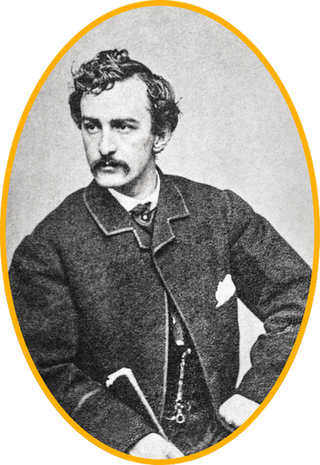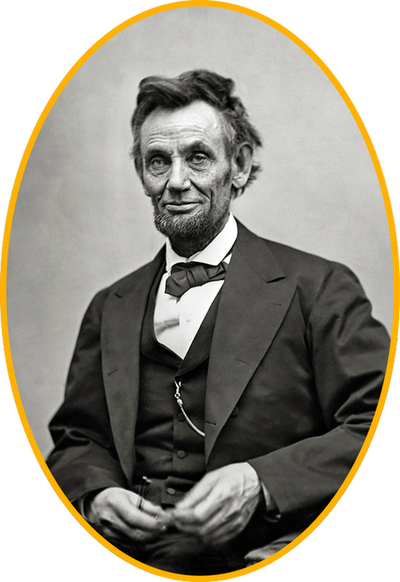Thesceneisoftendescribed:
OnthenightofApril14,1865,PresidentAbrahamLincolnwenttoFord’sTheatre.HeandMrs. Lincolnsatinaspecialboxabovethe stage.
Duringtheplay,amanenteredthebox.HewasafamousactornamedJohnWilkesBooth.BoothwasupsetoverhowtheCivilWarhadended.HeblamedLincoln.HeaimedagunatLincolnandfired.Whatfollowedwas chaos.
Tomakehisescape,Boothleapedfromthepresident’sboxontothestage.Onthewaydown,Booth’sbootcaughttheedgeofadecorativeflag.Hestumbledashelanded,breakinghis leg.
“Sic semper tyrannis! ” heshoutedtothepanickedaudience—Latinfor“Thusalwaystotyrants.”Hefledthestageandjumpedonhiswaitinghorse outside.
Morethan150yearshavepassed,buttheeventsofthatnightremainfresh—especiallyforthosewhovisitFord’sTheatretoday,inpersonoronline.Manyoftheartifacts,orobjects,fromthatnighthavebeencarefullypreserved.Theseitemsareapowerfullinktoourpast.Theyhelpuslearn,andtheyhelpus remember.

oneofthebootsJohn Wilkes Booth wore
PreparingforImportantGuests
TheflagthatBoothcaughthisfootonisonesuchitem.Thatmorning,amessengerfromtheWhiteHousehadcometothetheatertorequestticketsfortheevening’sperformance.Thepresidentandfirstladywouldmakeimportant guests.
JamesR.Ford,brotheroftheaterownerJohnT.Ford,quicklyvisitedtheTreasuryDepartmenttoborrowfiveflagstodecoratethepresidentialbox.Fouroftheflagsweretheregular,36‑starAmericanflagsoftheday.Thefifthflagsportedahand‑paintedeagleemblemondarkbluesilk.Thisflagwasanchoredtothemiddleoftheboxbya flag pole.AsBoothfell,hisspurtoretheedgeoftheflag—atearthatremains today.
NowkeptunderglassattheNationalParkService’sMuseumResourcesCenterinMaryland,theflagisoneofmorethansixmillionartifactstobecaredfor.TheyareallobjectsofhistoricsignificancefrominandaroundWashington,D.C.TheycomefromsuchplacesasFord’sTheatreorfrom thehomeofabolitionistFrederick Douglass.
Onlyasmallnumberofitemscanbeshowninmuseumsandothersites.Somearetoofragile.Others,toolarge.Mostly,therearejusttoomanytodisplay.Whatcannotbedisplayedmustbecarefullystoredinasafe,secure,andenvironmentallystable way.

Boothcarriedthiscompass duringhis escape.
Ford'sTheatre
Ford’sTheatreopenedinAugust1863.Aftertheassassination,thetheaterwasclosed.Thenthebuildingwasusedasawarehouseandofficebuilding.In1893,partofit collapsed.
Itwasrenovatedandreopenedasatheaterin1968.However,thepresidentialboxisneveroccupied.TheFord’sTheatreMuseumbeneaththetheaterhasmanyitemsthatarerelatedtotheassassination,includingthepistolBoothusedandBooth’s diary.


Booth'sdiaryistheonlyrecordofhispersonalthoughtsafterthe assassination.


Powellhadhistoothbrushwithhimwhenhewas arrested.
ThecollectionalsoincludesThomasPowell’stoothbrush.Whowasheandwhydoesthemuseumdisplayhis toothbrush?
PowellwasaConfederatesoldier.HeconspiredwithJohnWilkesBoothtoharmthepresidentandothermembersofLincoln’s cabinet.
Atoothbrushmightseemlikeastrangeartifactforamuseum,butsometimesordinaryobjectstakeongreatermeaningwhentheyareconnectedtoaninfamouspersonor event.
Inthiscase,thetoothbrushwasusedasevidenceagainstPowellduringhistrial.Anotherco‑conspiratortestifiedthatPowellalwayscarriedhistoothbrushwith him.
MapofWashington,D.C.,1860s
TheWhite House
Peterson House
Ford's Theatre
UnitedStates
Capitol
Smithsonian Institute
Washington
Monument
POTOMAC RIVER

